Event Summary
Speakers
- Maryia Markhvida, World Bank
- Manya Deyanova, Mott MacDonald, Bulgaria
- Giuseppe Margani, Department of Civil Engineering and Architecture, University of Catania, Italy
- Kelvin Berryman, GNS Science, New Zealand
- Marina Neagu, World Bank
Description
Friday 29 November, 11:00 – 12:30, Nicolae Iorga Room
Our homes play a central role in our lives: they shelter our families, give us a sense of security and belonging, and are often the most highly priced asset that we own. But today, residents around the world are facing many challenges associated with rapidly aging building infrastructure, where better management, maintenance, and capital improvements including energy efficiency are urgently needed. In addition, the housing sector is the most vulnerable sector, particularly during large earthquakes, as it typically concentrates the majority of financial losses leaving many families reliant on shelter and financial support from the government or friends and family. Addressing seismic risk in residential buildings has become a priority in earthquake- prone countries, however, how can this be achieved at scale given the limited resources and multiple priorities associated with aging buildings?
This session will bring together experts from different countries to discuss challenges and opportunities in strengthening seismic resilience of the residential sector.
Speaker bios
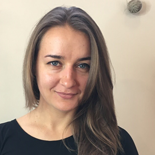 Maryia Markhvida received her Ph.D. from Stanford University, where she was one of the first members of the Stanford Urban Resilience Initiative. Her research and professional interests center around computational tech-niques for regional seismic risk modeling, post-disaster economic impact analysis, household disaster resilience, and application of machine learning techniques in risk quantification. Maryia currently works on the Disaster Risk Management team at the World Bank, conducting risk assessments in Euro-pe and Central Asia and helping governments integrate risk information into strategic decision-making. Maryia had also worked on model development and catastrophe risk modeling in the insurance sector.
Maryia Markhvida received her Ph.D. from Stanford University, where she was one of the first members of the Stanford Urban Resilience Initiative. Her research and professional interests center around computational tech-niques for regional seismic risk modeling, post-disaster economic impact analysis, household disaster resilience, and application of machine learning techniques in risk quantification. Maryia currently works on the Disaster Risk Management team at the World Bank, conducting risk assessments in Euro-pe and Central Asia and helping governments integrate risk information into strategic decision-making. Maryia had also worked on model development and catastrophe risk modeling in the insurance sector.
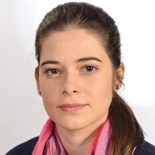 Manya Deyanova is currently a Principal Engineer at Mott Macdonald, lea-ding numerous seismic risk assessment projects. Manya holds a PhD degree in Earthquake Engineering and Engineering Seismology from ROSE doctorate program at the UME Graduate School, IUSS Pavia. She has expertise in sei-smic risk assessment and advanced finite element non-linear modelling and dynamic analysis. In addition, she has 10 years of experience as a licensed engineer in seismic design, structural assessment and retrofit of buildings and facilities. Manya has been a research collaborator in international scien-tific projects related to performance-based design of earth-retaining structu-res and seismic assessment of reinforced concrete precast buildings. She has authored and presented several research papers internationally.
Manya Deyanova is currently a Principal Engineer at Mott Macdonald, lea-ding numerous seismic risk assessment projects. Manya holds a PhD degree in Earthquake Engineering and Engineering Seismology from ROSE doctorate program at the UME Graduate School, IUSS Pavia. She has expertise in sei-smic risk assessment and advanced finite element non-linear modelling and dynamic analysis. In addition, she has 10 years of experience as a licensed engineer in seismic design, structural assessment and retrofit of buildings and facilities. Manya has been a research collaborator in international scien-tific projects related to performance-based design of earth-retaining structu-res and seismic assessment of reinforced concrete precast buildings. She has authored and presented several research papers internationally.
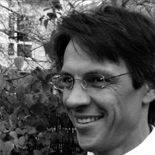 Giuseppe Margani is an associate professor of Building Construction at the Department of Civil Engineering and Architecture, University of Catania, Italy. He received his PhD in “Architectural Engineering: design, production and refurbishment techniques” from the University of Palermo, Italy. His rese-arch interests include sustainable architecture, energy and seismic renova-tion, innovation in building technologies, integration of renewable energy systems in the building envelope, and history of construction technologies. He is author or co-author of 7 books and of over sixty papers published in national and international peer-reviewed journals, and conference procee-dings. Giuseppe has experience in the development and direction of national and international research projects, and he is an independent expert of the European Commission for European research and innovation programmes. He has over 25 years of work experience in detailed design, building refurbi-shment and non-destructive tests on cultural assets.
Giuseppe Margani is an associate professor of Building Construction at the Department of Civil Engineering and Architecture, University of Catania, Italy. He received his PhD in “Architectural Engineering: design, production and refurbishment techniques” from the University of Palermo, Italy. His rese-arch interests include sustainable architecture, energy and seismic renova-tion, innovation in building technologies, integration of renewable energy systems in the building envelope, and history of construction technologies. He is author or co-author of 7 books and of over sixty papers published in national and international peer-reviewed journals, and conference procee-dings. Giuseppe has experience in the development and direction of national and international research projects, and he is an independent expert of the European Commission for European research and innovation programmes. He has over 25 years of work experience in detailed design, building refurbi-shment and non-destructive tests on cultural assets.
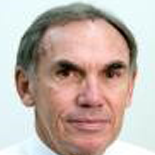 Kelvin Berryman is currently the leader of the natural hazards and risks theme of GNS Science. He is a geologist by training who joined the prede-cessor organisation to GNS Science in 1974. His speciality is the geology of earthquakes and tsunami. This has evolved increasingly into technical and strategic risk management. He often works with engineers, planners, and policy makers on design of new structures, seismic safety assessment of in-frastructure and disaster risk management. His research and applied science has been undertaken throughout New Zealand and extensively around the Pacific and beyond and presented in more than 130 peer-reviewed journal publications and a similar number of peer reviewed reports for public and private sector clients. He currently serves as NZ representative on the Go-verning Board of the GEM (global earthquake model) Foundation and is an elected Fellow and Life Member of the NZ National Society for Earthquake Engineering. In 2012 he received a Queens Service Order honour for services to science and Canterbury earthquake recovery.
Kelvin Berryman is currently the leader of the natural hazards and risks theme of GNS Science. He is a geologist by training who joined the prede-cessor organisation to GNS Science in 1974. His speciality is the geology of earthquakes and tsunami. This has evolved increasingly into technical and strategic risk management. He often works with engineers, planners, and policy makers on design of new structures, seismic safety assessment of in-frastructure and disaster risk management. His research and applied science has been undertaken throughout New Zealand and extensively around the Pacific and beyond and presented in more than 130 peer-reviewed journal publications and a similar number of peer reviewed reports for public and private sector clients. He currently serves as NZ representative on the Go-verning Board of the GEM (global earthquake model) Foundation and is an elected Fellow and Life Member of the NZ National Society for Earthquake Engineering. In 2012 he received a Queens Service Order honour for services to science and Canterbury earthquake recovery.
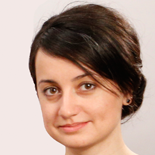 Marina Neagu is a development professional specializing in urban economy and local economic development. Over the past 10 years she has done extensive grassroots work across Romania assisting communities in participa-tory strategic planning processes. Besides her main activity as part of MKBT: Make Better, a Romania based organization dedicated to urban regeneration, she has worked as consultant for UNDP, the World Bank and Council of Euro-pe, on policy fields including integrated planning, community development, housing and seismic risk reduction. Her background is in economic studies, complemented by postgraduate degrees in urban planning and regional development at the University of Architecture and Urbanism in Bucharest as well as London School of Economics.
Marina Neagu is a development professional specializing in urban economy and local economic development. Over the past 10 years she has done extensive grassroots work across Romania assisting communities in participa-tory strategic planning processes. Besides her main activity as part of MKBT: Make Better, a Romania based organization dedicated to urban regeneration, she has worked as consultant for UNDP, the World Bank and Council of Euro-pe, on policy fields including integrated planning, community development, housing and seismic risk reduction. Her background is in economic studies, complemented by postgraduate degrees in urban planning and regional development at the University of Architecture and Urbanism in Bucharest as well as London School of Economics.
